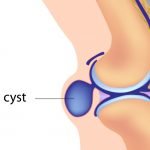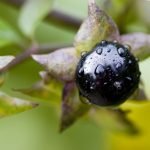Naturopathic Approach to Phimosis
Eric Yarnell, ND
Phimosis occurs when the foreskin is excessively tight and cannot be readily retracted off the glans. Phimosis is a physiological state until childhood, when the foreskin normally becomes readily retractable. In some cases, pathological phimosis occurs with fibrosis and tightening of the foreskin, potentially to the point of promoting urinary tract infections and balanoposthitis (infection and inflammation of the penis and foreskin). Pathological phimosis can be treated naturopathically, with surgical intervention as a last resort. See my forthcoming title Natural Approach to Urology and Men’s Health 2nd ed (Healing Mountain Publishing, expected 2012) for more details about all these subjects.
Most important, the foreskin should never be forced to be retracted (defined as retraction that causes pain). This will trigger more fibrosis and worsened problems. If the foreskin does not move easily on its own, leave it alone. Parents should be trained to leave their boys’ foreskins alone, wash with soap and water like any other skin on the body, and not necessarily expect retraction to any significant extent until age 12 years or after.
Physiological Phimosis and Circumcision Fraud
In allopathic medicine, physiological phimosis is sometimes used as an excuse for routine circumcision. This argument has gradually diminished as investigations have clearly shown the state is normal and healthy as late as the early teen years. At least half of intact boys have physiological phimosis at age 10 years, and 10% at age 15 years.1 Many clinicians do not specify what they mean by phimosis (physiological vs pathological), and definitions vary widely among practitioners, case series, and studies of phimosis, further raising the likelihood that many inappropriate circumcisions are performed for patients with physiological phimosis.2
Studies vary widely in reported rates of phimosis and rates of problems in circumcised vs intact boys, although problems with intact foreskins are almost always less frequent than previously portrayed. In one series of 545 boys younger than 12 years (272 intact and 273 circumcised at birth), balanitis xerotica obliterans (BXO) and “irritation” of the penis were more frequent in intact boys but not to a statistically significant degree.3 Adhesions were equally common between the 2 groups and were rare. Only 8 patients had symptomatic phimosis. Almost all problems were minor in intact boys. In another series of 468 boys, far more penile problems were seen in circumcised boys than in intact boys, including BXO, adhesions, and skin overgrowth simulating phimosis.4 Although prospective randomized controlled trials would provide more definitive evidence, physiological phimosis is not at present considered an indication for routine circumcision at birth or at any other time.5
Pathological Phimosis
Physiological phimosis must be distinguished from pathological phimosis. In the latter, pain and difficulty are encountered in retracting the foreskin, the meatus may be partially blocked, and pain or constriction may sometimes occur with the foreskin in place over the glans. Such patients may need referral to a urologist for definitive diagnosis, but if they are younger than 12 years and do not have symptoms, they almost certainly have physiological phimosis.
In many cases of pathological phimosis, the underlying process is unknown, but the foreskin seems to become adherent to the glans. In patients who have this problem and who clearly do not have BXO (discussed in the next section), the first step is to have the patient (if willing and able) gently try to retract the foreskin a little bit each day when in a hot shower or bath. This provides privacy and helps relax the tissues. The patient should not go so far as to cause pain but should try to see if he can obtain full retraction over a period of 3 months. The patient is many times embarrassed by this, may resist doing it, and will sometimes say he would rather be circumcised than have to do this. Attempts should be made to convince him that it is alright to touch himself this way because it is a medical problem, particularly if the patient’s family has certain religious beliefs or seems to have some other issues with anything having to do with masturbation, sex, or the genitals.
If self-stretching has failed at 3 months or if the patient is unwilling or unable to do it, then the next step is to have him apply a cream of Centella asiatica (gotu kola) and vitamin E. I generally add 20 mL of fresh gotu kola whole-herb glycerite or tincture with 5 mL of vitamin E oil to 25 mL of Calendula officinalis cream base, compounded in the clinic. The patient is to apply this to the entire foreskin every morning and night (always after bathing). These creams can degrade condoms, but the herbs are not harmful if they happen to get on or inside a sexual partner (obviously only relevant in older sexually active patients). This should be applied for at least 1 month to attempt to reduce adhesions and fibrosis enough to allow for manual retraction without pain. If this cream fails, other topical natural antifibrotics can be tried, along with oral bromelain (away from meals), gotu kola, mixed natural tocopherols, and other antifibrotics.
If all natural therapies fail, then topical corticosteroids are the next most effective and safe option. These naturally thin the skin and decrease adhesions, and evidence has shown their effectiveness. One study6 prescribed fluticasone propionate (0.05%) 1 to 2 times daily on the foreskin, which was effective in 91% of 1185 patients with phimosis. Another study7 confirmed the efficacy of topical corticosteroids, obviating the need for circumcision, although some patients actually seemed to have physiological phimosis, defined as “unretracted foreskin” without any other symptoms, a condition that arguably requires no treatment, as already discussed.
If all medical treatments fail, surgery may be required. A dorsal slit (cutting one side of the foreskin), French cut (removing just the distal ring of the foreskin), or full circumcision may be necessary.
Balanitis Xerotica Obliterans
Balanitis xerotica obliterans, or male genital lichen sclerosus, is a specific cause of pathological phimosis in which progressive fibrosis of the foreskin, and sometimes the glans, occurs.8 The foreskin often takes on a whitish cast, even in men with dark skin color, and becomes palpably tough. African American and Hispanic boys and men are more likely to be affected by BXO than men of Northern European descent.9 The tissue is weaker than normal foreskin and can tear easily. Other symptoms of BXO include genital pain or discomfort, pain during intercourse, genital itching, and decreased force of the urine stream.10 The exact cause of BXO is unknown, although it is definitely inflammatory in nature.
Cases of BXO are treated naturopathically with oral anti-inflammatory agents and immunomodulators coupled with the gotu kola–vitamin E cream already described. Other remedies that should be instituted include Curcuma longa crude powder (5 g twice daily) or with phosphatidylcholine (1 g twice daily), bromelain (3200-µg potency [1 g three times daily away from food]), and Astragalus membranaceus root glycerite (1 teaspoon three times daily) or granules (5 g dissolved in hot water twice daily). Other anti-inflammatory agents and immunomodulators may be helpful. The patient should eat a diet high in intake of vegetables, fruits, nuts, legumes, and healthy animal products, all organic as much as possible, and should drink plenty of water and green tea. Fish oil may also be helpful, as might probiotics and other agents that work on the gut, as this is a likely source of idiopathic inflammation in the body.
If these natural treatments fail, then topical corticosteroids are effective.6,7,11 Circumcision is the last resort if all other therapies fail.
Paraphimosis
Occasionally, the foreskin gets stuck in the retracted position and becomes inflamed. This can result in a large band of engorged foreskin strangling the glans penis. It becomes progressively more painful. Unless reduced, necrosis of the glans could occur. The emergency treatment is to apply ice and then very firm pressure continuously with both thumbs on the foreskin for 5 minutes to force blood out of the area. If the pain is very intense, then a penile block should first be administered to numb the entire organ. Once the ring of inflamed foreskin is reduced, then the glans is very gently moved back over the glans. If this maneuver fails, then a dorsal slit should be performed under local anesthetic or with a penile block to relieve pressure.12 Another option is to puncture the inflamed foreskin with an 18-gauge needle at several spots to relieve pressure.13
 Eric Yarnell, ND, RH is a graduate of Bastyr University. He complet-ed a two-year residency with Silena Heron, ND, and served as chair of botanical medicine at SCNM. He is past senior editor of the Journal of Naturopathic Medicine. Dr. Yarnell is a founding member and current president of the Botanical Medicine Academy and author of numerous textbooks and articles, including Naturopathic Urology and Men’s Health, Naturopathic Gastroenterology and Clinical Botanical Medicine. His area of clinical focus is urology and men’s health. He is assistant professor in botanical medicine at Bastyr University.
Eric Yarnell, ND, RH is a graduate of Bastyr University. He complet-ed a two-year residency with Silena Heron, ND, and served as chair of botanical medicine at SCNM. He is past senior editor of the Journal of Naturopathic Medicine. Dr. Yarnell is a founding member and current president of the Botanical Medicine Academy and author of numerous textbooks and articles, including Naturopathic Urology and Men’s Health, Naturopathic Gastroenterology and Clinical Botanical Medicine. His area of clinical focus is urology and men’s health. He is assistant professor in botanical medicine at Bastyr University.
References
- Cold CJ, Taylor JR. The prepuce. Br J Urol. 1999;83(suppl 1):34-44.
- Dewan PA, Tieu HC, Chieng BS. Phimosis: is circumcision necessary? J Paediatr Child Health. 1996;32(4):285-289.
- Herzog LW, Alvarez SR. The frequency of foreskin problems in uncircumcised children. Am J Dis Child. 1986;140(3):254-256.
- Van Howe RS. Variability in penile appearance and penile findings: a prospective study. Br J Urol. 1997;80(5):776-782.
- Griffiths D, Frank JD. Inappropriate circumcision referrals by GPs. J R Soc Med. 1992;85(6):324-325.
- Zavras N, Christianakis E, Mpourikas D, Ereikat K. Conservative treatment of phimosis with fluticasone propionate 0.05%: a clinical study in 1185 boys. J Pediatr Urol. 2009;5(3):181-185.
- Ghysel C, Vander Eeckt K, Bogaert GA. Long-term efficiency of skin stretching and a topical corticoid cream application for unretractable foreskin and phimosis in prepubertal boys. Urol Int. 2009;82(1):81-88.
- Becker K. Lichen sclerosus in boys. Dtsch Arztebl Int. 2011;108(4):53-58.
- Kizer WS, Prarie T, Morey AF. Balanitis xerotica obliterans: epidemiologic distribution in an equal access health care system. South Med J. 2003;96(1):9-11.
- Powell JJ, Wojnarowska F. Lichen sclerosus. Lancet. 1999;353:1777-1783.
- Vincent MV, Mackinnon E. The response of clinical balanitis xerotica obliterans to the application of topical steroid-based creams. J Pediatr Surg. 2005;40(4):709-712.
- Choe JM. Paraphimosis: current treatment options. Am Fam Physician. 2000;62(12):2623-2626, 2628.
- Fuenfer MM, Najmaldin A. Emergency reduction of paraphimosis. Eur J Pediatr Surg. 1994;4(6):370-371.









